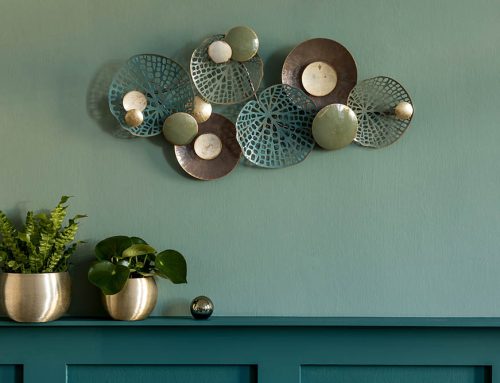Bathroom Painting
You’ve probably heard that small spaces should only be painted in light colors because dark hues make the room look smaller. This may be the case if you paint the entire bathroom or a sizable portion of the walls a dark hue, but if you employ darker tones correctly, they can be effective.
It’s a common fallacy that light colors make a wall appear farther away and dark colors make a wall appear closer. Consider how a shadow adds depth to a scene to get the idea. If you try to paint a scene entirely with light hues, the scene will appear flat.
It illuminates and grabs our attention, but light is a delicate thing. Darkness gives a room depth and dimension. Dark paint colors, however, cannot be as black as shadows unless you’re a fan of that particular aesthetic. Because some light is reflected off the surface, the darker paint colors can still be seen. They must therefore be used carefully.
Use this concept while choosing lighter and darker colors for your bathroom painting project by paying attention to how light interacts with items in nature and how shadows create depth and character. Here’s how.
 Selecting Your New Color Scheme
Selecting Your New Color Scheme
Before painting your bathroom, you must choose a new color scheme. The ideal approach is to select three complementary colors in lighter and darker tones. Choose a color you like—a color that is at least two shades lighter, a color that is two shades darker, and a third color. If you want some variety, pick three complementing colors or lighter variations of the same color. To give the room depth, you’ll use the various paint color shades to draw some walls or other elements backward and some forward.
Use Darker Colors to Create Depth
The majority of compact bathrooms have a tub/shower combo. The tile is typically bright, reflecting a lot of light. Darker colors look best in the cove that runs along the top of the bathtub or shower area. The deeper hue will provide depth to the space because the tub’s contrasting light accentuates the tile’s surface.
Use a Medium-Toned Color for the Majority of the Bathroom Walls.
The majority of the bathroom should be decorated in the second color you picked. The main background of the room will be created with this color.
The Lightest Color Should Be Used On Trim & Molding
Molding and trim work used to be stained dark, but lighter hues give a space a more contemporary look. To paint the trim and molding in the bathroom, select the color that is the lightest among those you considered. As a result, the surface becomes more reflective and draws attention, while the medium and deeper tones produce a three-dimensional look. Don’t forget that you don’t have to limit yourself to white or cream either! To achieve a unified design, consider bathroom accessories that incorporate a small amount of all three paint colors.
If you would like to learn more about bathroom painting in the Charlotte area, please call JMC Building Group at 704.607.7966 or fill out our online request form.





